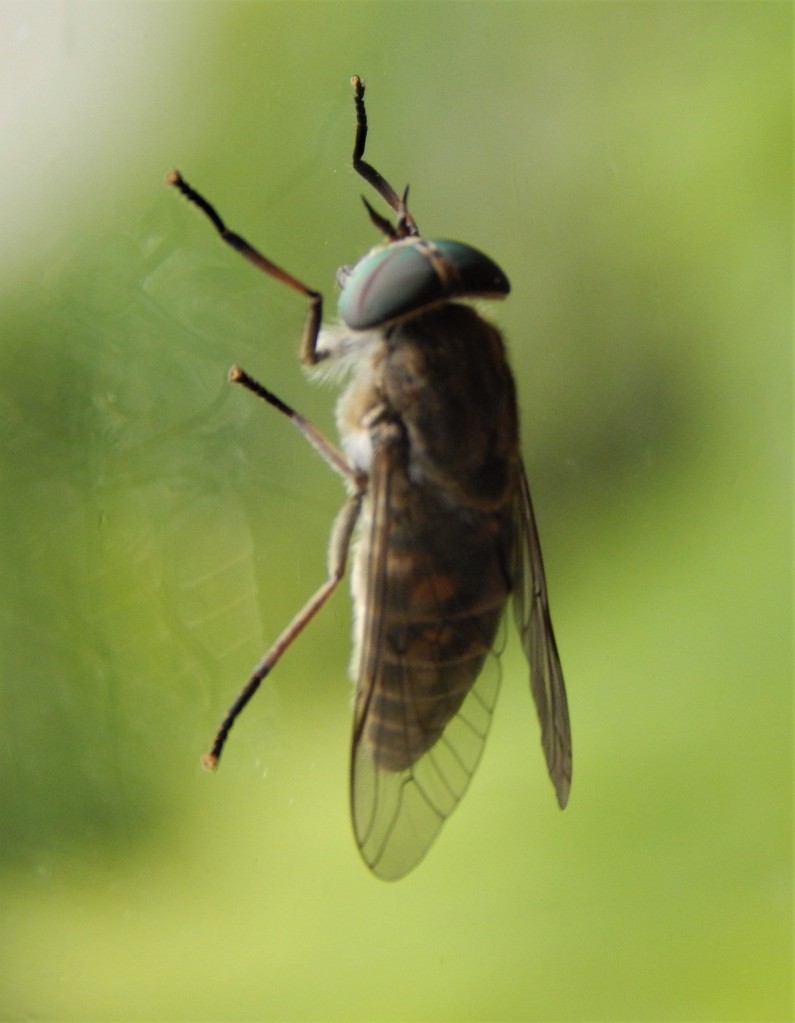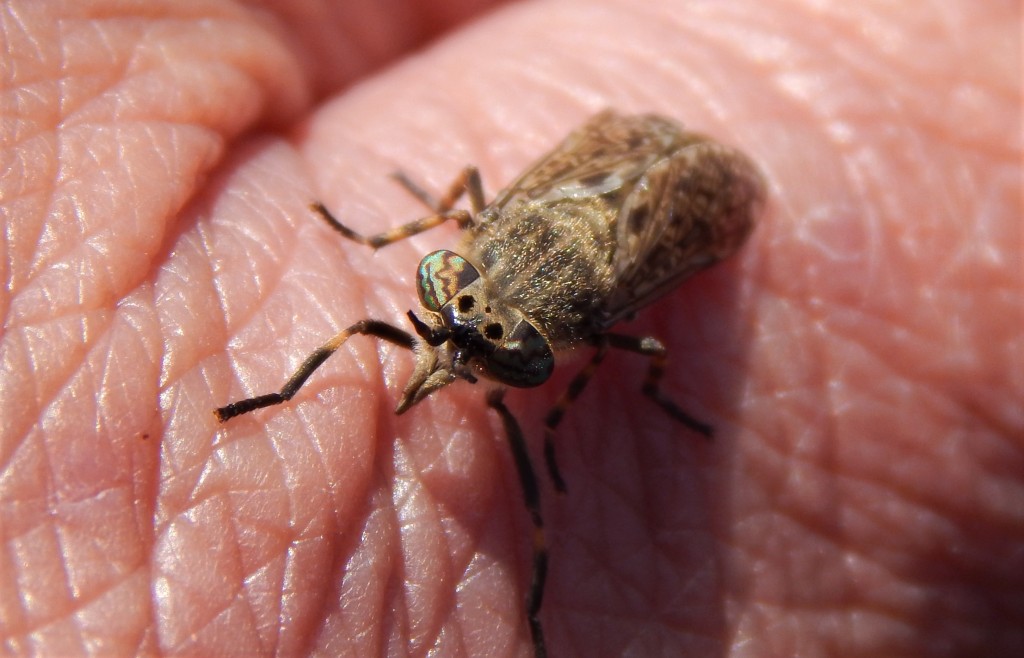
[334] Tabanus sudeticus, Dark Giant Horse-fly and other Horse-Flies
Introduction
Tabanus sudeticus, the Dark Giant Horse-fly (or Horsefly) is one of about thirty species of Horse-flies found in the UK. Tabanus bromius and Haematopota pluvialis are two other common species.
Worldwide there are about 5 000 species in the family Tabanidae, of which about 1 300 are in the genus Tabanus.
Species in the family may be called Horse-flies, Gad-flies or Clegs, and sometimes when more appropriate locally Deer-flies, Buffalo-flies, Moose-flies or Elephant-flies.
Taxonomy
Kingdom – Animals
Phylum – Arthropods
Class – Insecta
Order – Diptera (Flies)
Suborder – Brachycera
Infraorder – Tabanomorpha
Superfamily – Tabanoidea
Family – Tabanidae (Horse-flies)
Subfamily – Tabaninae (Horse-flies)
Tribe – Tabanini, Haematopotini
Genus – Tabanus, Haematopota
Scientific Names – See text
Name
Cleg, clegg or gleg is a dialectical word from Scotland and the North of English for horse-flies, coming from old Norse. Gad, also from Old Norse, means a spike (cognate with goad) so a gad-fly is a spike-fly.
Tabanus is the Classical Latin word for these flies. Sudeticus comes from the Sudeten geographical area (now at the intersection of Germany, Poland and Czechia.) Haematopota means blood-drinker.
Horse-flies
Male Horse-flies have weak mouthparts and just feed on nectar from flowers.
The female flies have mouthparts formed into a sharp stabbing organ with two pairs of cutting blades, and a spongelike part to lap up the blood. She feeds on the blood of cattle, horses and other animals. Her saliva contains an anticoagulant to prevent the blood clotting.
Females can feed on nectar but they need to feed on blood before laying her eggs. It can take her six days to digest a blood meal.
They have large compound eyes. In female flies the eyes are separated but in males the two eyes almost touch.
I won’t go into other significant features or differences between species.
Larvae are tubular in form and generally aquatic or semi-aquatic. They are carnivorous, eating worms, other insects and arthropods, and can be cannibalistic. They move to drier locations to pupate.
Tabanus sudeticus



This the heaviest fly in Europe, is found over most of western Europe.
Tabanus bromius

Sometimes called the Band-eyed Brown Horse-fly, this is one of the smaller species of Tabanus. It is widespread in Europe and also found in North Africa and the Middle East.
Haematopota pluvialis


Sometimes called the Common Horse-fly or Notch-horned Cleg Fly, this fly is found in most of Europe and much of Asia except the south-east.
I think this fly landing on me five years ago was one of the things that led me more into the macro photography of insects.
Other Notes
Although horses and cattle are the main targets, female horse-flies will also bite humans for their blood.
See also
I don’t normally attempt to spot and identify flies because it is too difficult. There are hundreds of families and it isn’t always easy even to identify to family level. Species level identification often involves microscopic examination of genital structures.
